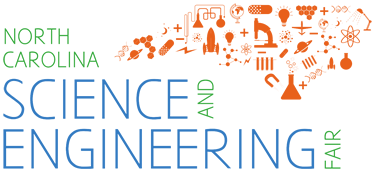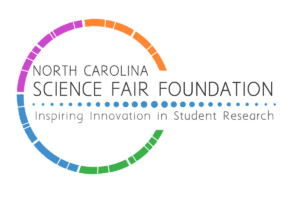To help judges best review your project and ensure it can be considered for awards at the regional and state level and possibly go on to national or international competition, each project must be accompanied by several forms

As an affiliate of the International Science and Engineering Fair (ISEF), the North Carolina Science and Engineering Fair (NCSEF) adheres to ISEF required forms. Each provides the information needed to review your project and to ensure safety and compliance with the ISEF rules.
All Senior Projects must complete forms 1A (student checklist), 1 (checklist for adult sponsor), and 1B (approval); are required of all projects, most, like form 3 (risk assessment) are only required for specific types of research.
The ISEF Rules Wizard can help you determine what forms you will be expected to submit. This flow chart (flow chart video) is another tool that can help determine which forms you need to complete.
Each student should use the above rules wizard BEFORE you begin experimenting. It will not only identify which forms you need to complete which which (most of them) should be filled out and signed BEFORE any research takes place. You may also find out that your type of idea is not even allowed due to safety reasons. Only Forms 1C, 7, and the abstract are completed AFTER the research. Note that all dates of the signatures reflect when the approval or consent is given.
The ISEF Rules page gives the list of rules (for ethical and safety reasons), along with links to the actual forms you’ll need. Rules and guidelines are also available in Spanish, but forms must be completed in English.
Most forms should be filled out and signed BEFORE any research takes place. Only Forms 1C, 7, and the abstract are done AFTER the research. The dates of the signatures reflect when the approval or consent is given.
Forms required of all projects
| NCSEF & ISEF accepts typed signatures on all forms. | completed by (before/after experimentation) | divisions required | |
|---|---|---|---|
| Elementary & Junior | Senior | ||
| Abstract (NCSEF form) Provides a quick reference for judges, SRC, and other NCSEF volunteers to ensure your research is seen by educators and professionals in the field. A 250 word or less summary written after experimentation is completed. Include a few sentences covering the purpose of the experiment, procedure, data collected, and conclusions. A copy of your completed form will be included in your check-in packet for display with your project. Your abstract and the additional form fields provide quick reference for judges and the SRC committee on the day of the fair. Watch the video | student(s) (after) | ✅ | |
| Approval Form (ISEF Form 1B) – Senior Division ONLY A separate form must have a signature and be submitted for each team member, signed by the student and their parent/guardian (not teacher), acknowledging that all rules have been read and followed. This form is used by the NCSEF Safety Review Committee (SRC), along with your research plan or project summary (see below) to provide approval. Important: All projects must be approved by the SRC before competition in the regional and state fairs. Additionally, projects involving human participates, vertebrate animals, or potentially hazardous biological agents must have SRC or institutional (for research conducted at a regulated research institute) BEFORE experimentation begins. If in doubt, ask. Watch the Video | each Senior student (before) | ❌ | ✅ |
| Elementary and Junior EZ Form (NCSEF form replaces ISEF forms 1, 1A, and 1B) Identifies you and is required for you to participate. Each elementary and junior student, for both individual and team projects, must complete and have all needed signatures on the form. Each parent and Adult Sponsor must review the Research Plan and sign and date this Form. This simplified form replaces the ISEF Forms 1, 1A, and 1B for Elementary and Junior Projects. Watch the Video | each student, their
parent/guardian, and the adult sponsor (before) | ✅ | ❌ |
| Checklist for Adult Sponsor (ISEF Form 1) – Senior Division ONLY This form is required for all senior projects. Adults sponsors should complete all sections, carefully reviewing the Additional forms required section checking only boxes applicable to the project, sign, and date. Watch the Video | adult sponsor (before) | ❌ | ✅ |
| Student Checklist (ISEF Form 1A) – Senior Division ONLY Identifies you and provides permission to participate. Information about the project including when and where the research took place along with contact information for you and your adult sponsor. Complete all sections and follow the instructions for the required Research Plan/ Project Summary to be included with this form, (see page 2 of the checklist). Watch the video | student(s) (before) | ❌ | ✅ |
| Research Plan or Project Summary (There is not a ISEF or NCSEF form for the Plan/Summary.) Outlines the question you intend to find answers for and how you will go about it. Used by the Safety Review Committee (SRC) to ensure all ISEF rules and regulations were followed. This provides more depth and detail than the abstract and is written before experimentation begins with addendum as needed to ensure what was actually done is recorded. Must include: Question or problem being addressed, your hypothesis or engineering goals, a detailed description of methods or procedures. Instructions can be found on page two of Form 1A Watch the Video | student(s) (before then amended as needed) | ✅ | ✅ |
NCSEF Parent Release Form (NCSEF form) Individuals and every member of a two or three person team must submit their own individual form. Every item must be completed, student signature and parent guardian signature should be typed in on this form. This form attests the student agrees to the statements and the parent or guardian agrees for the student to participate. | student(s) (after) | ✅ | |
Forms required of some projects
The ISEF Rules Wizard can help you determine what forms you will be expected to submit.
| completed by (before/after experimentation) | required of projects involving… | |
|---|---|---|
| Regulated Research Institutional/Industrial Setting (ISEF Form 1C) This form is completed by the supervising adult at the research setting, explains what the student researcher actually did. Watch the Video | supervising adult (after) | research conducted at a research institution such as a university or industrial lab |
| Qualified Scientist (ISEF Form 2) Approval by a qualified scientist and, if not directly supervising the experimentation, a designated supervisor. Required of projects involving BSL-2 biological agents, DEA-controlled substances, as well as many projects involving human or vertebrate animals. Watch the Video | qualified scientist & supervisor (before) | human participants, vertebrate animals, potentially hazardous biological, substances and devices |
| Risk Assessment (ISEF Form 3) Important to ensure that the student understands any risks that may be involved with the project an ensures that all safety precautions were taken. Watch the Video | student & supervisor (before) | hazardous chemicals, activities or devices. |
| Human Subjects (ISEF Form 4) Provides documentation and approval of projects involving human participants conducted outside a Regulated Research Institution and the safety and well being of the test subjects and the confidentiality of results will be ensured. Reviewed by the Institutional Review Board (IRB) where each member evaluate the risk level and determines if written documentation of consent/permission is required. Sample Human Informed Consent Form Watch the Video | student & supervisor (before) | human participants |
| Vertebrate Animal — experimentation at home or school (ISEF Form 5A) Describes how the animal(s) will be cared for throughout experimentation at a non-regulated research site (such as home or school) for review BEFORE experimentation begins to ensure that all rules and safety precautions are followed as well as determine the level of supervision required. Watch The Video | student & veterinarian/supervisor (before) | vertebrate animals |
| Vertebrate Animal — experimentation at a regulated research institution (ISEF Form 5B) Describes how the animal(s) will be cared for throughout experimentation at a regulated research institution (e.g. university lab or industrial setting). Signed by the qualified scientist or principal investigator. Note a copy of Institutional Animal Care and Use Committee (IACUC) approval must be attached, not a letter from qualified scientist or principal investigator. Watch the Video | qualified scientist/PI & IACUC approval (before) | vertebrate animals |
| Potentially Hazardous Biological Agents (PHBA) Risk Assessment (ISEF Form 6A) Lists hazards and the precautions being taken when working with PHBA. Watch the Video | student & qualified scientist (before) | microorganisms, recombinant DNA, human or animal blood, tissue or body fluids. |
| Human and Vertebrate Animal Tissue (ISEF Form 6B) Describes the source of any human or vertebrate animal tissue. Watch the Video | student & qualified scientist (before) | human or animal tissue, blood, or body fluids. |
| Continuation Projects (ISEF Form 7) Describes how the project is different from previous experimentation in the same field of study. The previous year’s abstract and research must be attached. This is required of any project in a similar area of research as any previous project of the student or any team member. Watch the Video | student & qualified scientist (before) | continuation or progression in the same field of study as a previous project |
Guidelines for Project Materials
- Guidelines for Project Materials for Judges – Rules and format for required forms and documents sent to virtual and in-person judges.
- Slide presentation layout guidelines:
- Quad Chart instructions. Required of senior projects in region 6, optional (but appreciated by judges) for the all other regions and the state fair


